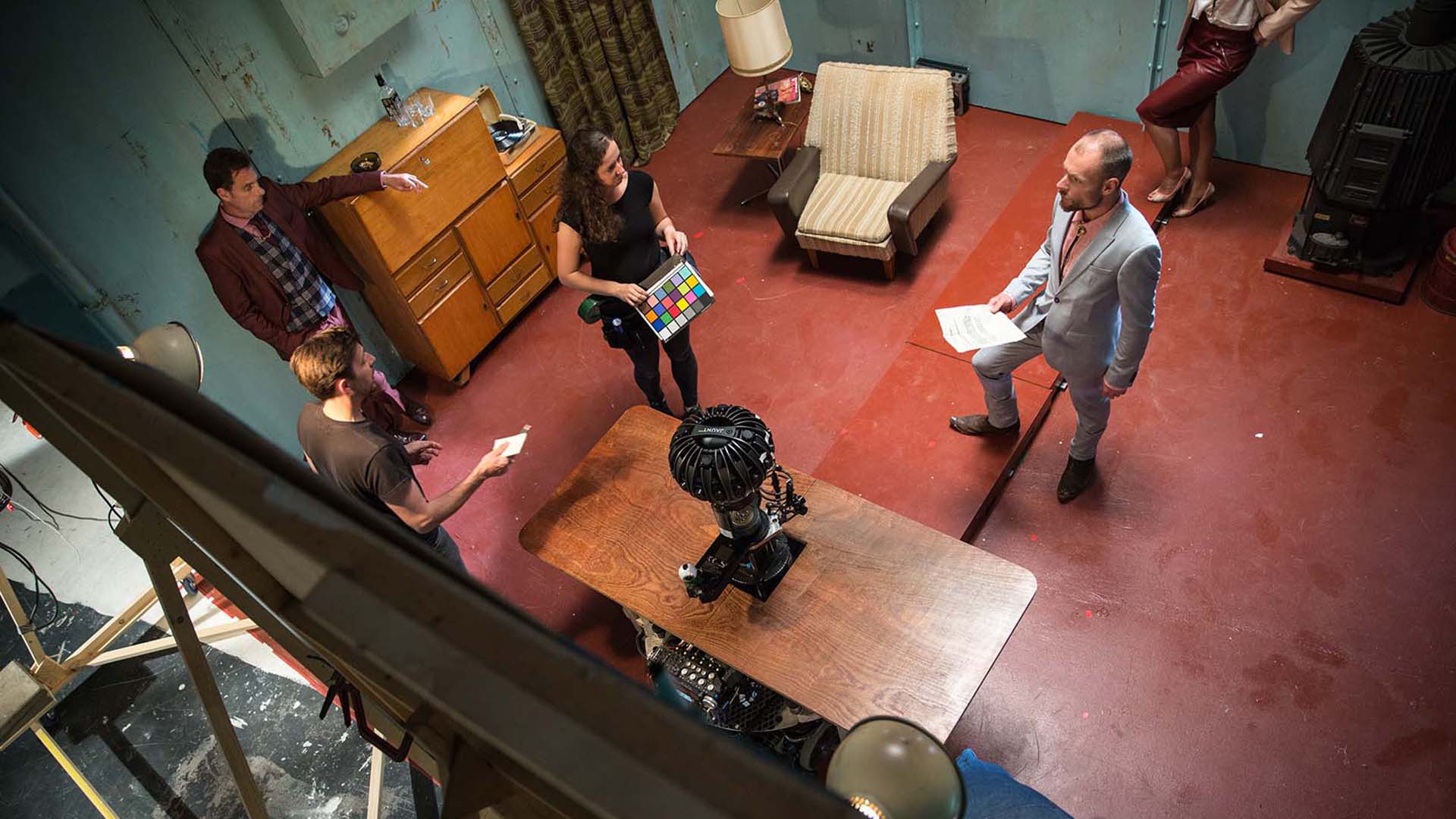In the fall of 2015, we participated in an experiment at the VR Days designed to explore how visual storytelling works in VR. One year later, Ashes to Ashes is released. This short tragicomedy in VR is the final outcome of this adventure.
The whole experience of making Ashes to Ashes was a blast. But what did we learn from it? What insights did we gain? The three directors behind the film, Ingejan Ligthart Schenk, Jamille van Wijngaarden and Steye Hallema, share their five most valuable lessons.
1. Having three directors is a blessing
Directing Virtual Reality is different from directing a conventional film. An important difference is that the director does not use a monitor to check what’s happening in front of the camera. The action happens around the camera. Working with three directors means three pairs of eyes to monitor what’s happening during the rehearsals and the shoot. It was in our case a big advantage that every director could focus on a different aspect. We were obviously very lucky that we ‘clicked’ so well together and that were able to make the film with great confidence in each other and we had a lot of fun making it.
2. Entice viewers
In a conventional film you can easily get a close-up or cut to a reverse shot. In Virtual Reality you need to retain the viewer’s focus in a different way. It’s similar to theater, in that you have to lure the viewer to look to the left or to the right. It is the duty of the directors to entice the viewer to follow the action. Sound design and lighting are an important part in achieving this, but so is the mise-en-scene. The actors provide the focus, not the camera. And not the editing of scenes, but rather the editing ‘on set’ by the actors through the mise-en-scene is what determines to a large extent the dynamics of your film. The actors create their own close ups by walking towards the camera, or they make themselves more or less important in relation to the camera. As a result, directing is also choreographing to a certain degree.
3. Use the space
In VR, it’s not about the frame but about the space. Not just on an anecdotal level, but also on a visual level there should be plenty to experience for the viewer. The viewer is in a virtual reality, a world created to tell a story. The space and its size, ambience, design, expectations and secrets are an important part of the narrative. But make sure that you leave enough to the viewer’s imagination. A space that surrounds the viewer quickly unveils its secrets and that would be a waste.
4. Take the crew with you on your journey
The approach of ‘Ashes to Ashes’ was in many ways similar to a conventional film. Our crew had a lot of experience making films, but VR was still new to most of them. In fact, 90% of our crew had never seen a VR movie so it’s still kind of abstract to them. Where do you put your lights? How do you record sound? How do you experience a VR movie? Legitimate questions that we wanted to tackle first. We showed our crew some short VR movies and this made it a lot clearer to everyone what they were getting into. In ‘Ashes to Ashes’ we play with the notion of fiction and reality. The filmic reality in our story turns out to be an actual film set and our crew would be part of the narrative. So we asked a lot from our team, because in addition to doing that what they are good at, we asked them to assume a role whenever they were in the picture. Really everyone was part of a giant choreography.
5. Make clear what the role of the viewer is.
Unlike film, in which the viewer watches a story in a frame, the viewer is positioned in the center of the narrative in VR. The viewer thus has a much more important role than in film. It is important to consider this carefully, and to know exactly who or what the viewer is and how to address them. Are they the “fly on the wall’? Are they a character in the story? In our case, the viewer is grampa Git’s ashes in the urn. That is how the viewer is addressed. It’s what keeps them engaged.
 Submarine Channel
Submarine Channel




